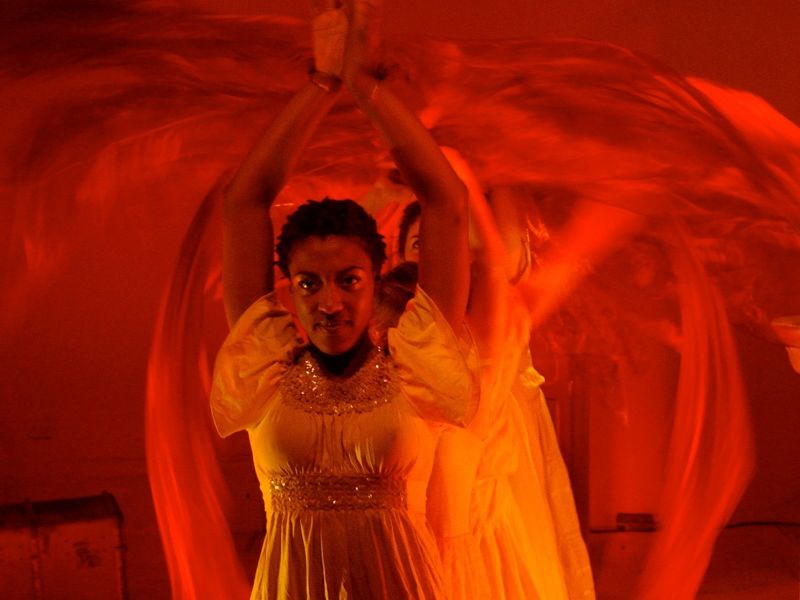
© Image courtesy of StagePhoto
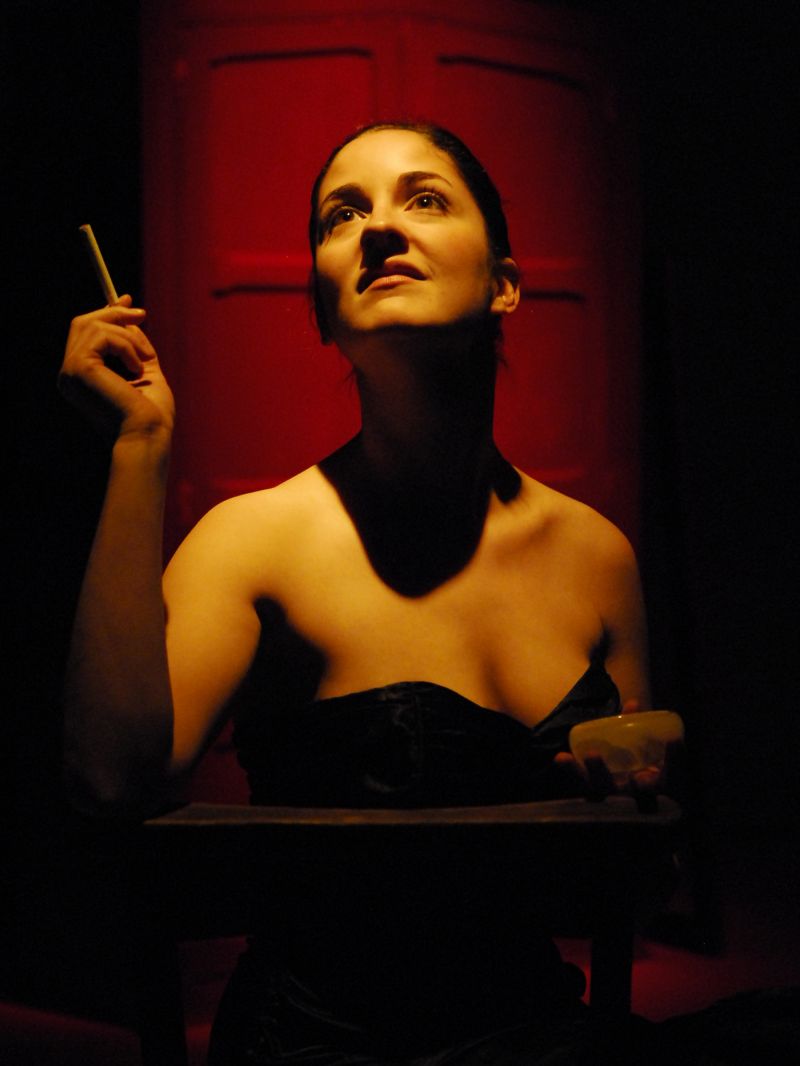
© Image courtesy of StagePhoto
| Shane Armstrong | Button-Moulder, Ensemble |
| Simon Balcon | Begriffenfeldt, Ensemble |
| James Bentley | Peer Gynt, Ensemble |
| Gerard Canning | Dovregubben, Ensemble |
| Libby Curly | Ingrid, Ensemble |
| Stephen Doran | Passenger, Ensemble |
| Paul Engers | Captain, Ensemble |
| Kristofer Gummerus | Peer Gynt, Ensemble |
| Katie Hayes | Green Woman, Ensemble |
| Adrienne Kress | Solvejg, Ensemble |
| Lucy Lill | Helga, Ensemble |
| Maddy Myles | Åse, Ensemble |
| Viola Newbury | Devil, Ensemble |
| Simone Saunders | Anitra, Ensemble |
“Superb ensemble theatre hitting its dramatic mark. Terje Tveit’s Dale Teater Kompani (Britain’s Ibsen equivalent of the RSC) [Ibsen Stage Company] shows a confident, perceptive and radical way with this written-to-be-read epic, following the life of a country lad, and liar, turned millionaire magnate. Ensemble spirit is the production’s strength, suiting the script’s rapid evolutions and a central character’s slipperiness personified. Like the onions appearing at one point, Peer has no centre. It’s only the love he somehow inspires in Solvejg, which anchors him at his life’s end. Adrienne Kress’s Solvejg is an initially awkward-mannered, quietly assertive young woman, whose moral upbringing somehow latches onto Peer. Amid the whirl of is ever-changing existence, in an Arabian market or wherever, she’s a vision of patience and limpid stillness, fittingly appearing at the play’s end from the only significant set-piece on the Rosemary Branch’s otherwise bare stage. This is a wardrobe, dominating the space, allowing shock discoveries, or a sense of characters chasing through a world environment. It’s a fitting metaphor too for the flow of memories and guilt in Peer’s life. Never more then when it’s laid flat for as death-bed for Peer’s mother Åse (a scene skirting kitsch with its candles and softly metallic vibration). Similarly, a length of green muslin becomes the recurring reminder of Peer’s time with the troll women - a splendidly messy 5-way sex scene. This, and the full-cast Bøyg swaying throughout the entire stage, insisting Peer makes his way round, an image central to his evasiveness, are vivid physicalisations, often productively countering the action’s agitation and speed with slowness of movement and music, in a production which works best in the play’s outer stretches. The middle section would benefit from more concrete representation of the international affluence surrounding Peer (generally, the production works best given pre-knowledge of Ibsen’s story). James Bentley (alternating with Kristofer Gummerus) moves convincingly between energised confidence and desperation. And the final phantasmagoria of Peer’s search, in madness or death, for identity in a swirling, elusive ensemble is a spellbindingly theatrical summation of the play’s thematic core.”

© Image courtesy of StagePhoto

© Image courtesy of StagePhoto
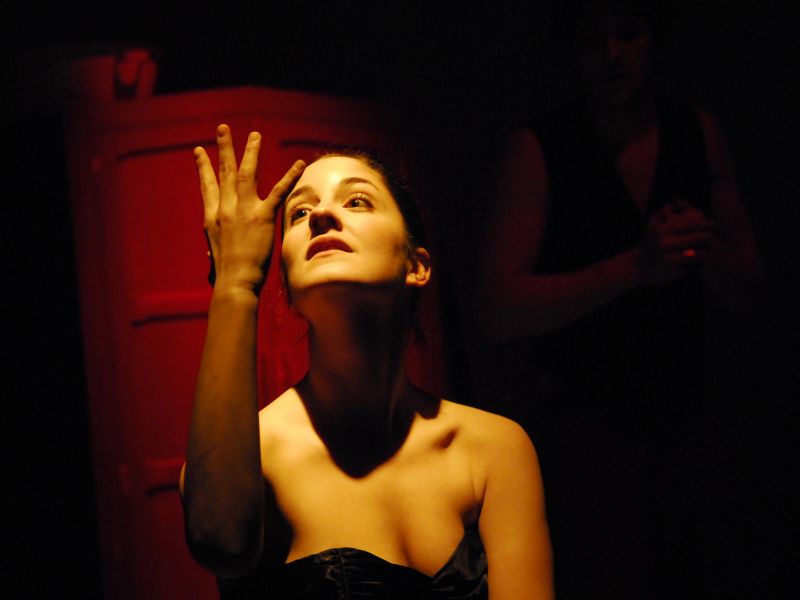
© Image courtesy of StagePhoto
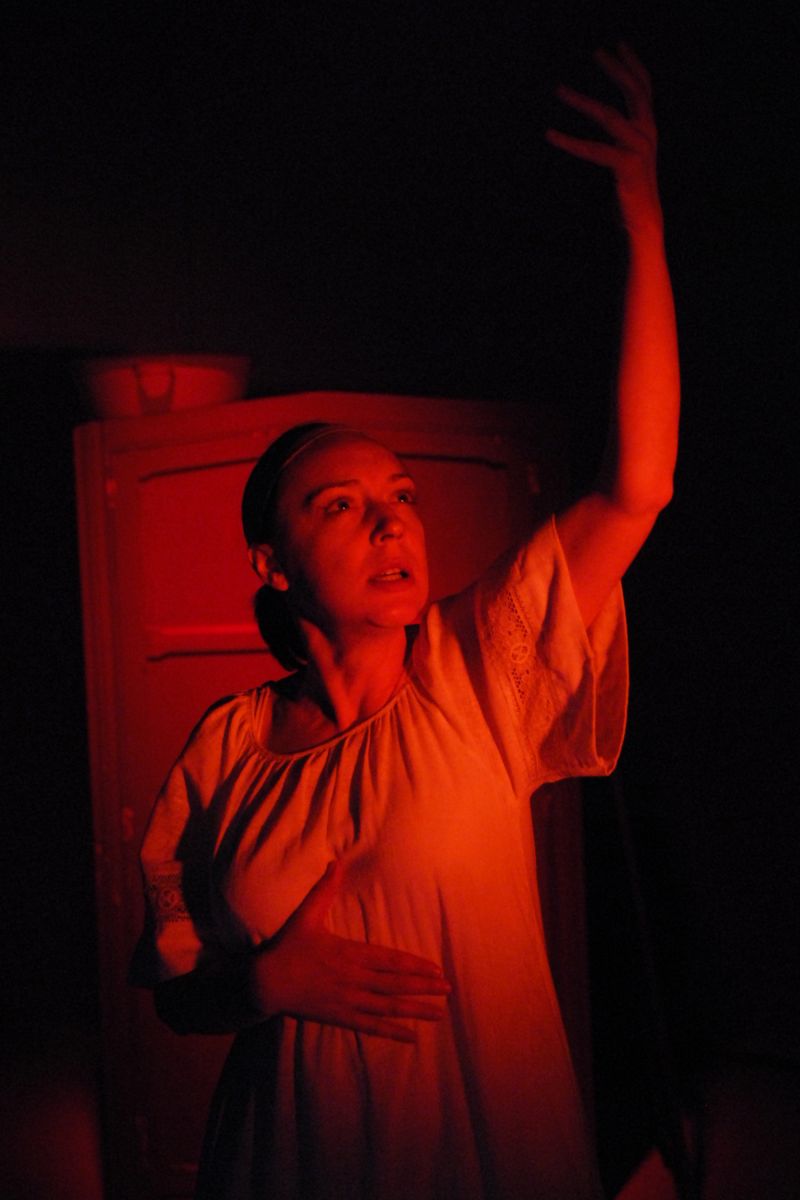
© Image courtesy of StagePhoto
“A symbolic play in rhymed verse, Peer Gynt is long and notoriously difficult to perform, with locations including Norway, Morocco, an exploding yacht, Egypt, the Troll kingdom, a ship which sinks at sea leaving only a dinghy for one person and a moor. In addition to the general difficulties facing a production team in staging this play, those of us not able to hear Ibsen in Norwegian have to put up with translations on top of everything else, and some of these have not made things easier. In light of this, Terje Tveit’s production at the Rosemary Branch is absolutely fantastic. He has translated, adapted and directed and does not shirk any of the difficulties. His translation is clear, humorous, poetic, moving and very believable coming from the mouths of the characters. [...] With fourteen actors the ensemble playing is superb. [...] Maddy Myles as Peer’s mother gives an immensely exciting and moving performance, particularly at her reunion with Peer before her death. [...] A tiny theatre space with only a backless wardrobe and some beautifully handled props, makes the small space seem like an advantage, adding to the thrill and immediacy of Peer’s adventures. [...] Once again the Rosemary Branch flies the flag for top class small scale theatre.”
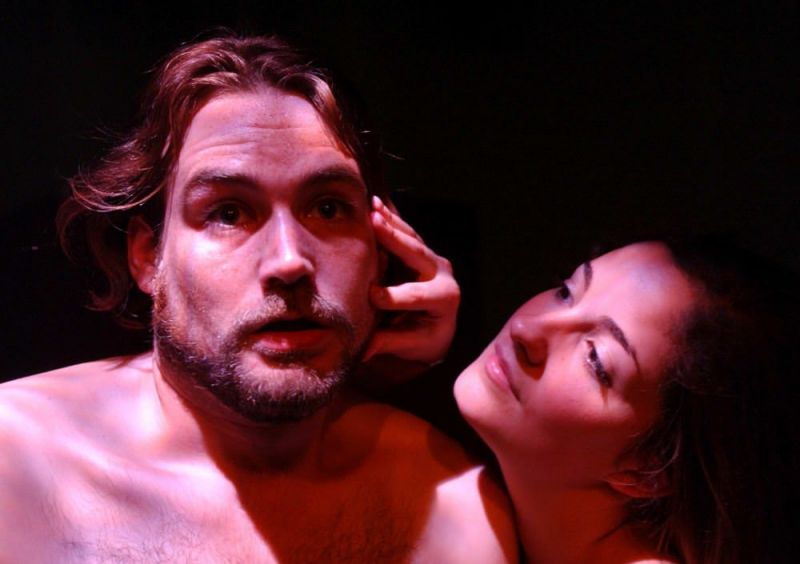
© Image courtesy of StagePhoto
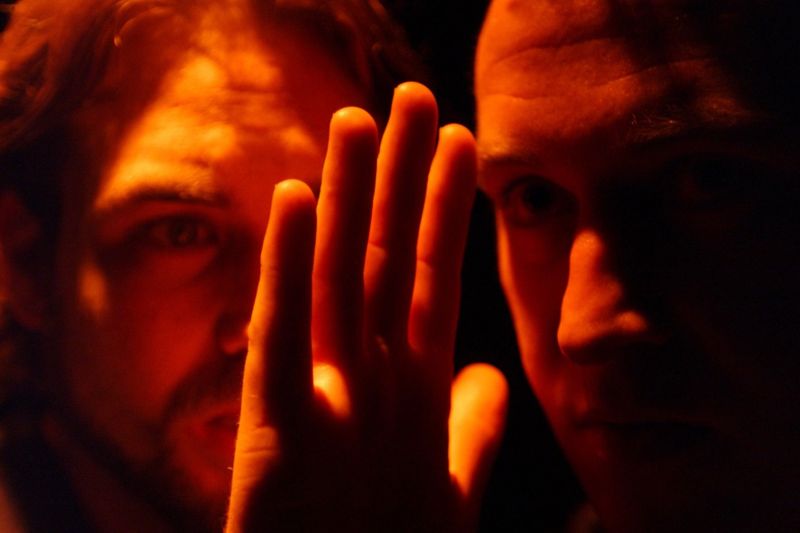
© Image courtesy of StagePhoto
“Peer Gynt is a bizarre fantasy with scenes shifting seamlessly between quite disparate locations without explanation. [...] The Dale Teater Kompani [Ibsen Stage Company], working on a shoestring budget, has had to be incredibly inventive to bring this text to life. A modern reading of the text would suggest that the natural treatment would be to film it, but here we are, above a pub in Islington looking at a stark, white set with only a wardrobe and some chairs waiting to see this most image-reliant play. [...] Here is presented a new translation of the Norwegian original that retains the feel of Ibsen’s verse and rhyme - certainly no mean feat and in fact not fully retained in many of the standard published translations of the play. [...] The production is an absolute riot, veering between a drunken, bawdy party to a sinister hush and back without any immediate stops. [...] The multi-tasking actors, who any moment may have to switch between lead character, crowd member or even scenery, perform with great verve and obvious love of the work. They metamorphose from terrible drunkards to disgusting trolls with an impressive ability for abject behaviour that is both ugly and great fun to watch.”
“Cramming a cast of 14 on to the Rosemary Branch stage is an achievement in itself and it proves well worth the effort, in this accomplished ensemble piece. An equally arduous task is squeezing Ibsen’s celebrated poetical fantasy into a manageable time frame without losing the breadth required to tell the tale of Peer’s lifelong adventures. Terje Tveit’s new translation has a fresh, lively feel to it, with much of the original rhyming text effectively recreated in English. With the tempo of the piece swinging wildly between raucous knees-ups and darker, solitary moments, on the whole the adaptation captivates. [...] As Peer, James Bentley captures the maverick’s unquenchable thirst for life and for getting into trouble, evoking both his endearing and invidious facets to good effect. Peer’s exchanges with his long-suffering mother (Maddy Myles) are excellently performed, with pace and humour. The rest of the company combine well – Gerard Canning, Katie Hayes and Paul Engers standing out. [...] Perhaps the play’s greatest strength is Finnuala McNulty’s lighting. Given the limited and crowded stage area, her design is imaginative and brilliantly establishes both mood and space. Federica Zurleni’s choreography in the Arabian dance scene is also a highlight.”